Buying a used combine – what to look for
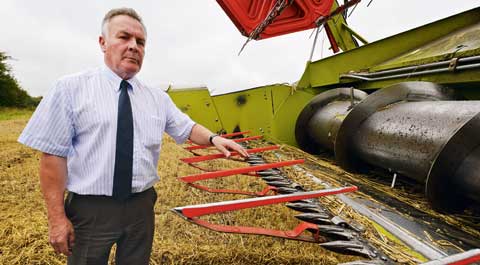
According to Roy Cansdale, Combine World’s trade/export sales manager (above), the UK used combine market is currently about 2,500 machines a year.
“This figure is usually in line with the number of new combines sold at a ratio of 2.5 to 1, which means that if the UK total for new combines is 1,000 then 2,500 used ones are also sold,” he explains.
The bulk of the used combine market, about 60%, is taken up by growers with smaller areas of cereals who require a machine which will offer reliability and, in an ideal world, continue to work for quite a few seasons.
For these growers it is the straw walker-type combines which draw the greatest interest. The demand is for a well-proven harvesting system which can be easily understood and maintained.
The market for new combines also involves a significant number of larger, high-capacity machines which are designed to harvest several thousand acres each season. Enormously expensive and carrying a wealth of high-tech control systems, the demand for these machines is not generally as strong as it is for straw walker machines.
In fact, deciding what to do with a large combine which has been traded in for a new one can pose some problems for the trade. Many are exported to Eastern Europe. Others, says Mr Cansdale, find a home in the UK – frequently with contractors – where they continue to put in some useful work.
Well looked after
“You have to remember that the vast majority of new combines – whether they are standard straw walker types or all-singing, all-dancing big rotary machines – are usually well looked after, driven by experienced operators and remain in reasonable condition,” he says. “No manufacturer can afford to offer poorly performing or constructed combine harvesters.”
So far this year, he reports that Combine World has sold 461 combines with 126 of them exported and, since it the business was started in October 1989, a total of 7,300 combines have been sold for £331m.
To help us identify the points to look for when buying a second-hand combine, Mr Cansdale takes us around a Claas Lexion 600 that is now in its fourth season.
A hybrid combine that uses a combination of pre-thresher, drum and rotors, the Lexion 600, when it was introduced in 2005, was reputed to be the most powerful combine in the world, with a capacity of more than 1,600ha (4,000 acres).
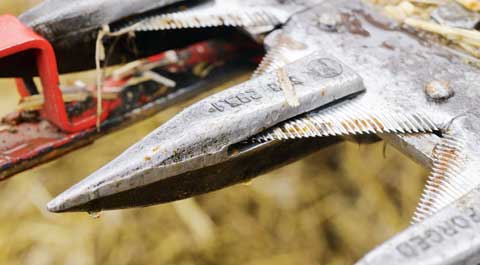
Starting at the front end, a good efficient cut of the crop is essential – if it can’t handle that chore then the rest of the combine is not going to be doing a lot. Check serrated blades for wear – the degree of wear is a good indication of the conditions the combine has been working in and for how long.
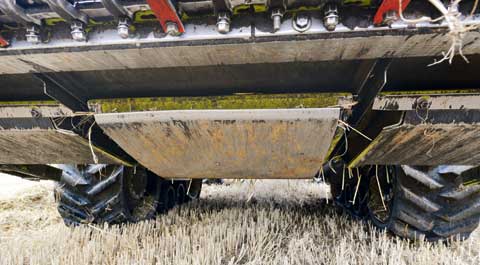
Underneath the header, with the lift ram stop in place, check on the wear of the skids and that they are not worn or bent. While you’re there an inspection of the height control sensors should be made. Always running on the ground, these sensor bars are likely to experience faster wear than the skids.
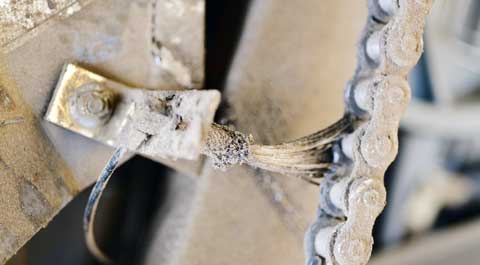
Working along the left-hand side of the combine is a chance to note the condition of the tank unloader chain and to check whether or not the lubrication oil supply is being applied to it.
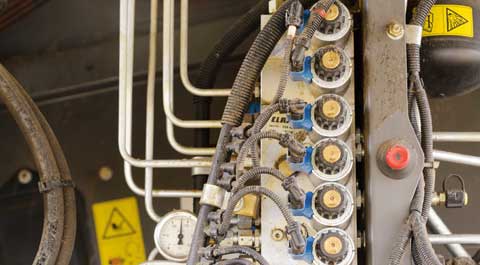
One of a combine’s biggest enemies is vermin, which love to chew on electric wires. Check that all exposed wires are not damaged – electrical fires caused by shorting can be seriously bad news.
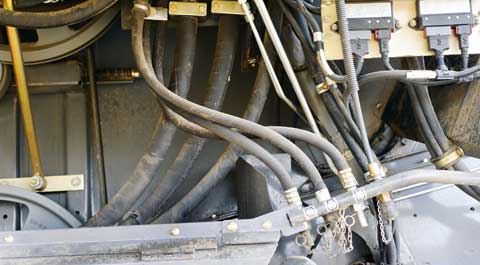
A combine has plenty of hydraulic piping so make a point of checking pipes for chafing and junctions for leaks, as you go round the combine. Not something you might think of in the heat of the moment, but still important.
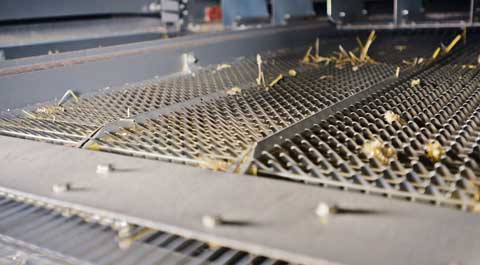
Round to the back of the combine and a chance to see how the sieves are looking. The 600 has a light in here so it would be good if someone could switch it on for you. Are the sieves bent, look uneven or mis-shaped? Make a note if they are.
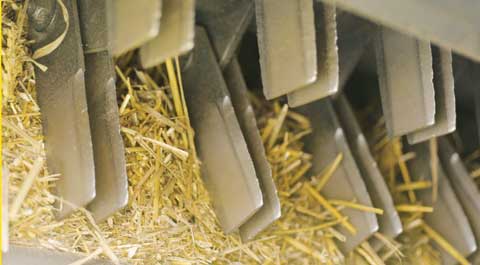
Straw chopper blades wear, and when they are blunt their power requirement increases significantly. The good news is they can be turned to present a new edge; the bad news is there are not three sides.
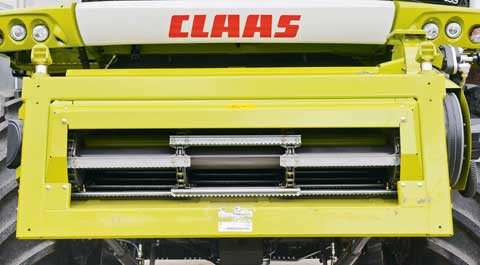
Look inside the elevator housing and see whether there are any bent slats or the chains are badly worn. This is a tough place to be and any stones that make their way on to the table usually make their presence known in the elevator housing.
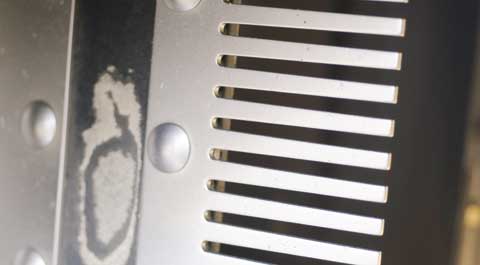
While you’re checking the straw choppers take a look at the wear on the paddles, which not only spread the chopped straw but also the chaff exiting off the sieves. These look in very good condition.
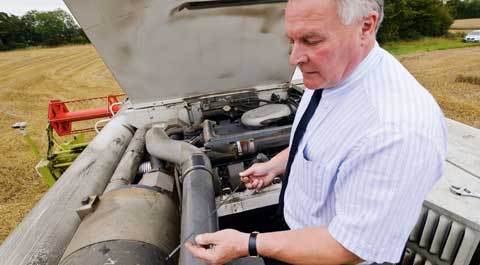
Time to clamber up to the engine bay, where a 580hp V8 Mercedes block awaits inspection. With the engine oil dip stick, take a look at the condition of the oil – black’s OK but gritty and tired looking isn’t, and neither is no oil on the dip stick.
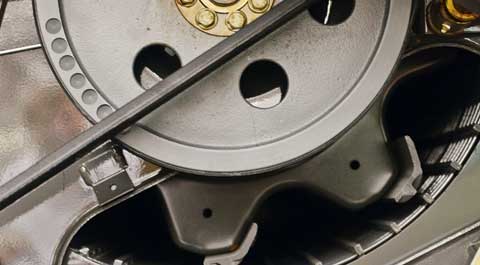
And then onto the drum and concave, where a close inspection of beater bars and concave wires should be made. This where more than 90% of the threshing takes place so it needs to be in tip-top condition.
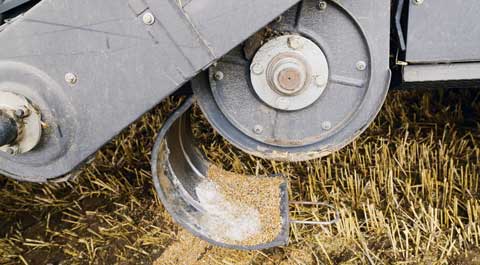
If you’re happy with the engine, descend earthwards once more and remove the cover of the clean grain elevator to check on the condition of the paddles and chain.
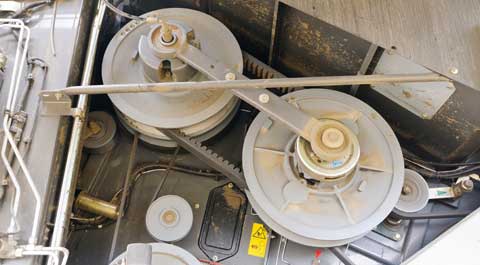
The big variator pulleys, which are just about at cab level, connect the drive to the drum – a key drive if there ever was one. It’s a big belt but still capable of wear so check for any splits or uneven narrowing.

